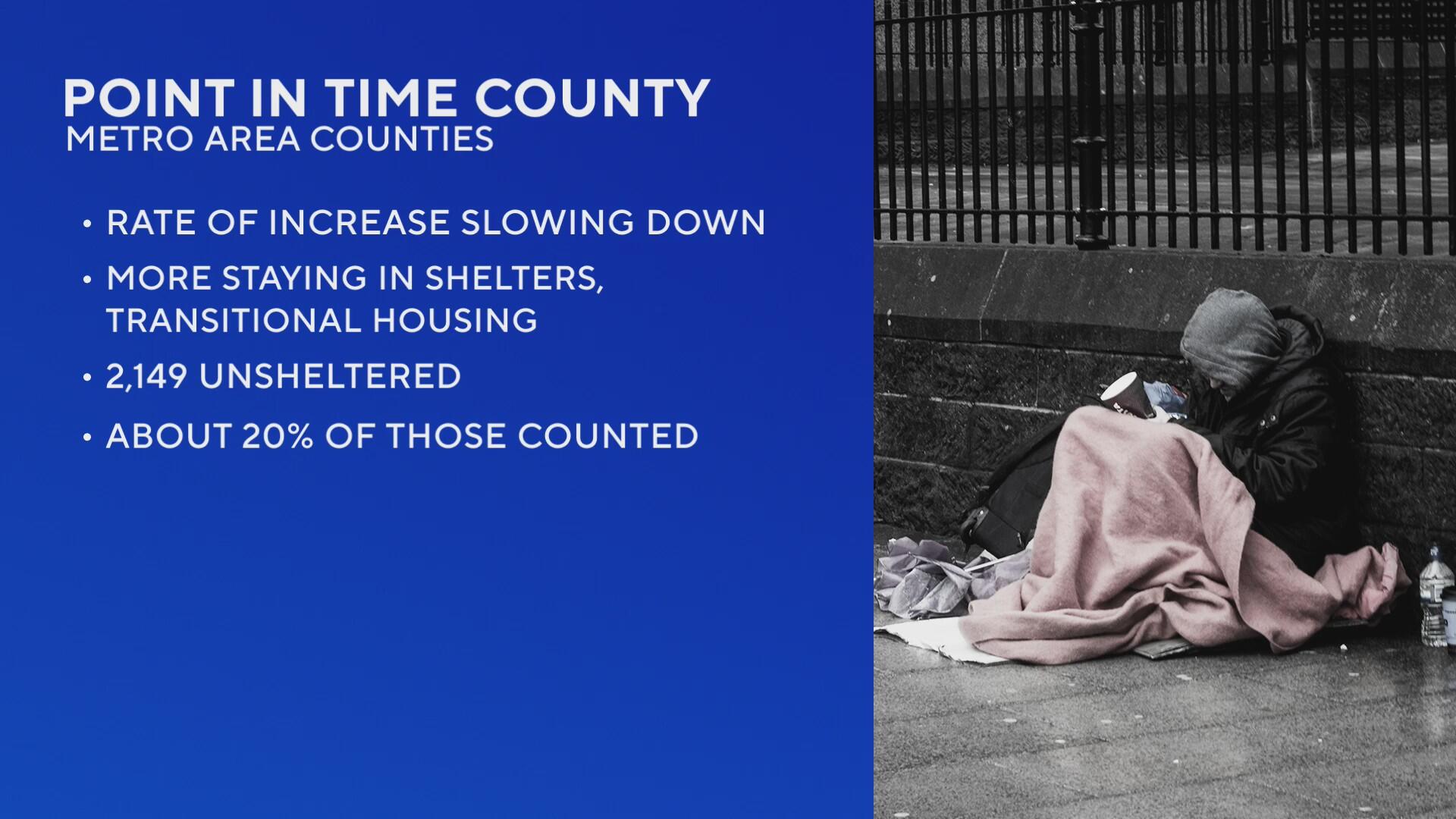More homeless in Denver, but fewer unsheltered, city's point-in-time count shows
Denver recorded more people experiencing homelessness in its 2025 point-in-time count but fewer people living on the streets, according to the mayor's office and officials with the Metro Denver Homeless Initiative.
The point-in-time count has workers and volunteers record the number of homeless people on a single day every January to compare a 24-hour period each year. The MDHI conducts this count all over the Denver metro area and in major metropolitan areas around the country. New York, Los Angeles, San Francisco, Atlanta, and others do similar counts each year.
The latest results of the yearly study show the total number of people experiencing homelessness in the Denver area increased from 9,997 in 2024 to 10,774 in 2025, but the MDHI says the rate of increase has slowed compared to previous years.
Officials touted the reduction in the number of unsheltered people, however. Those staying in emergency shelters and transitional housing increased from 7,058 in 2024 to 8,625 in 2025, according to MDHI. And the number of people sleeping on the street, in cars, or other places "not suitable for living" decreased from 2,919 to 2,149.
"Homelessness is solvable -- we've proven what works," Jason Johnson, executive director of MDHI, said in a statement on Monday. "The 2025 PIT count data reinforces what we already know: when we invest in coordinated, evidence-based solutions and work together across systems, we see measurable results. Our success in reducing veteran homelessness by 30% in Metro Denver over the past four years demonstrates this clearly."
Denver Mayor Mike Johnston also hailed the efforts of his office and those working to reduce the number of people living on the streets.
"Denver is proving that homelessness is solvable so long as we are willing to put in the work to solve it," said Johnston. "In less than two years we have gone from a city that swept people from block to block to one that treats people with dignity and delivers real results. This policy is not only morally just but effective."
While the efforts to count people are extensive, they're not perfect, warn experts and officials, who also caution against drawing conclusions from the data, given the counts only cover one 24-hour period per year, and factors like weather on that day can cause outliers.
But data from MDHI still shows a steady rise in total homelessness in Denver alone in each of its point-in-time counts since January 2020, with 2021 representing a small outlier due to MDHI not counting unsheltered people that year. The "total sheltered" numbers include those in emergency shelters, transitional housing, and safe havens.
You can explore more of MDHI's data .
Attempts to reach nonprofit homeless advocacy groups on Monday and Tuesday were unsuccessful, but advocates have raised concerns in the past about the methodology and accuracy of point-in-time counts, such as failing to count people in jails, hospitals, and who are otherwise out of reach or unknown to workers and volunteers who participate in the counts.
A published by the National Institutes of Health found that the actual number of homeless people in a given city or county can be between 2.5 and 10.2 times higher than those reported in point-in-time counts.





